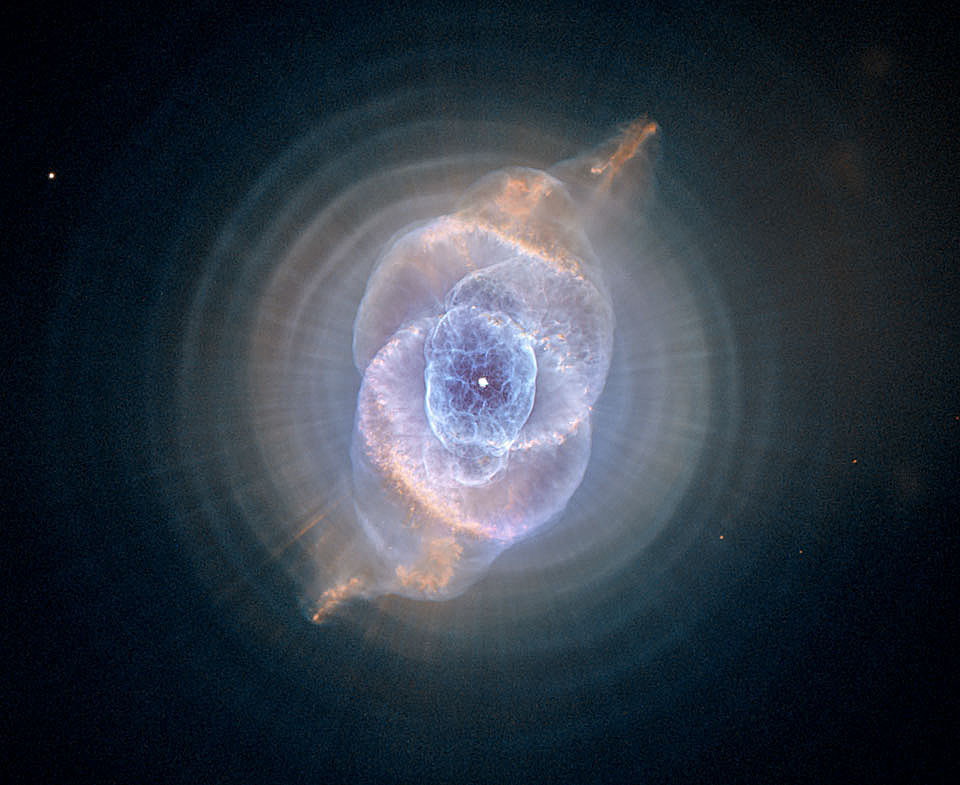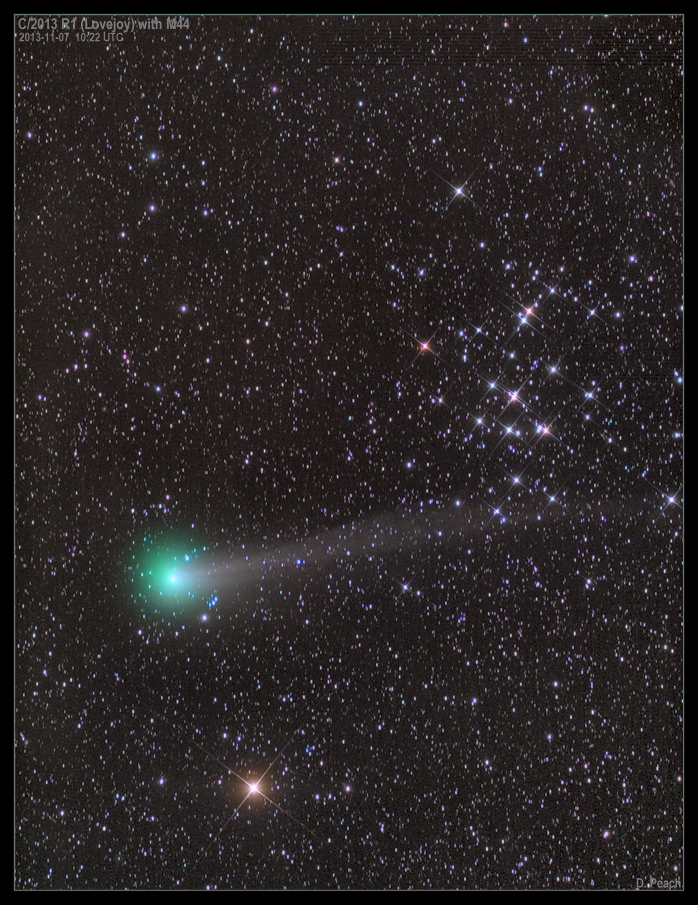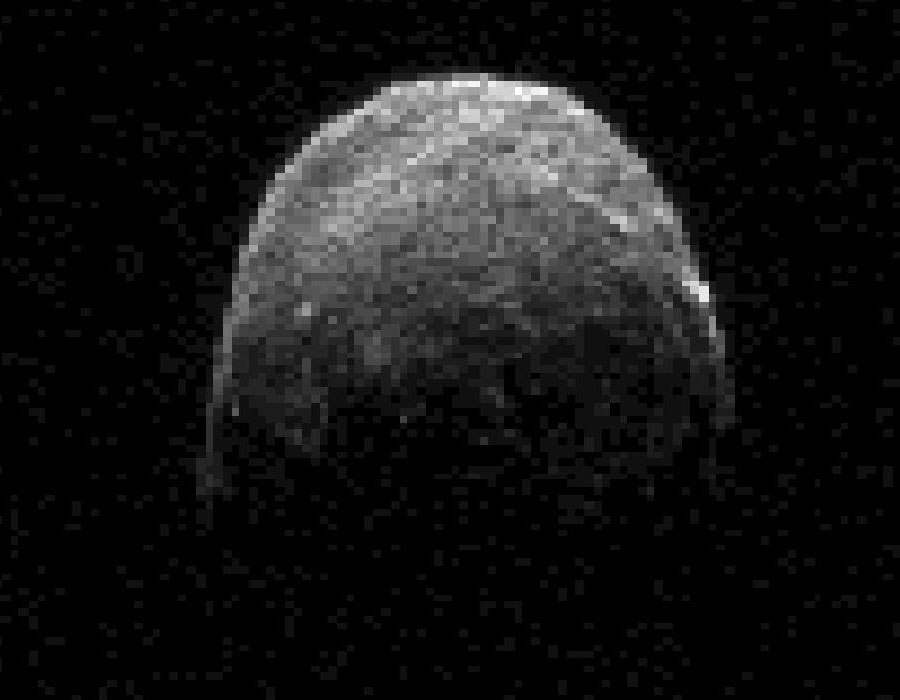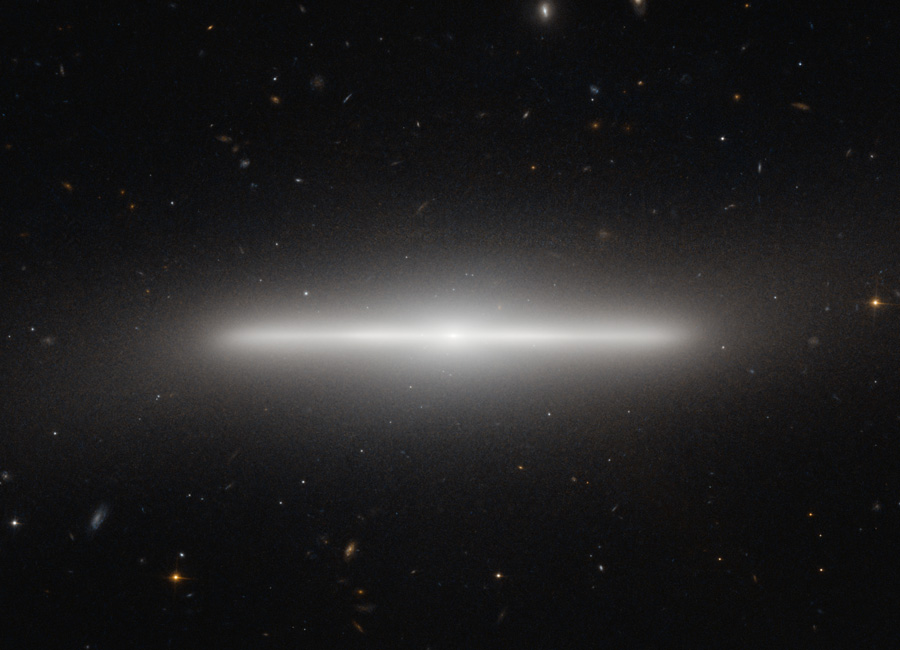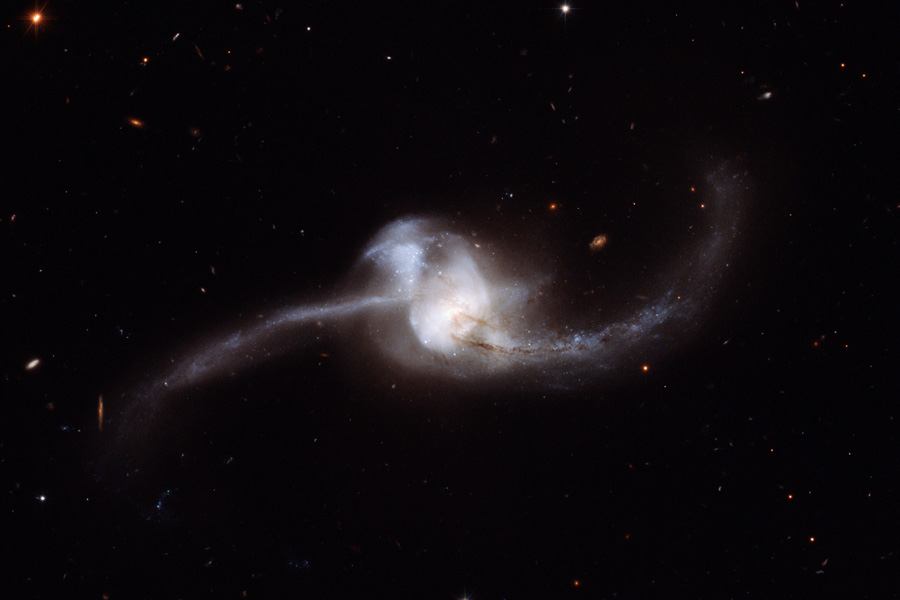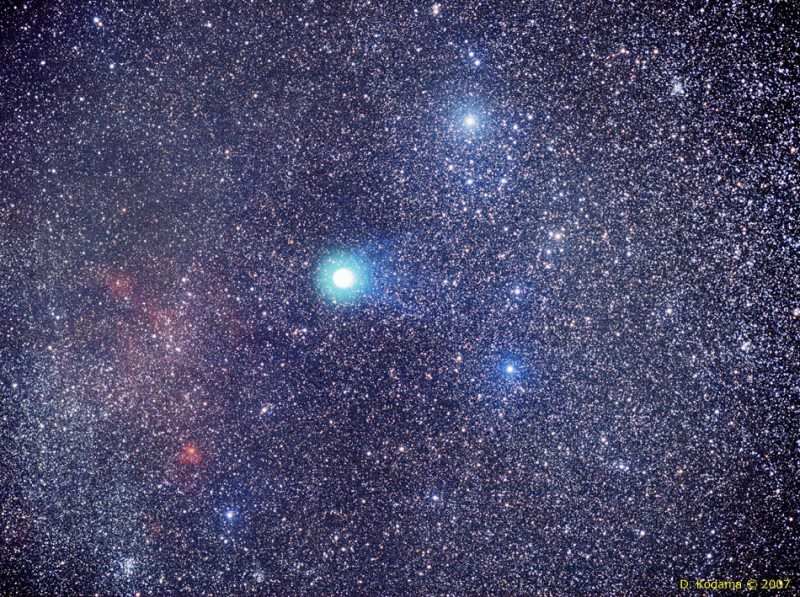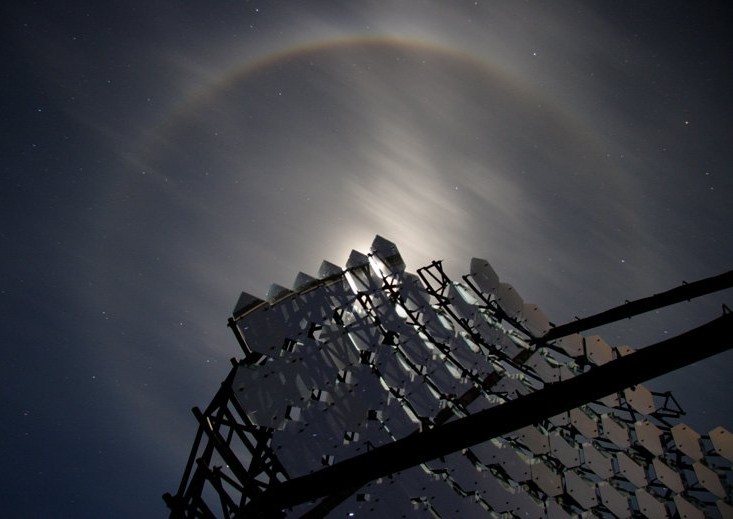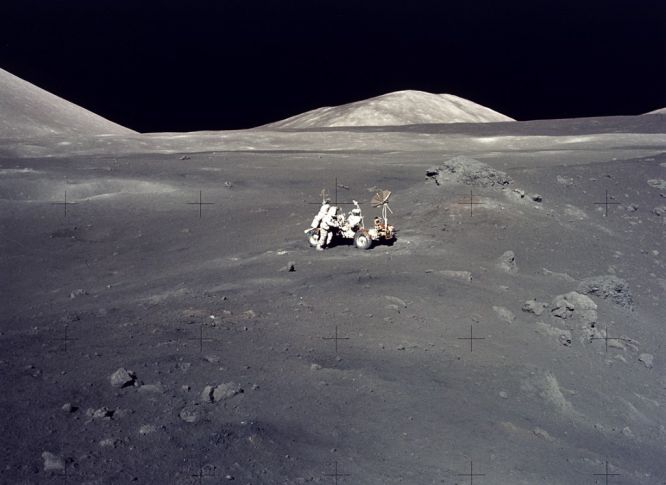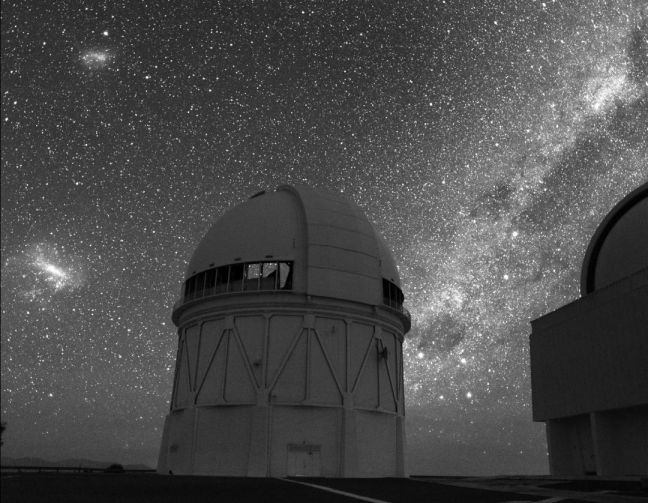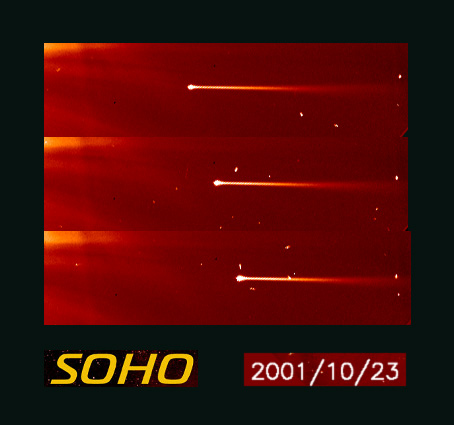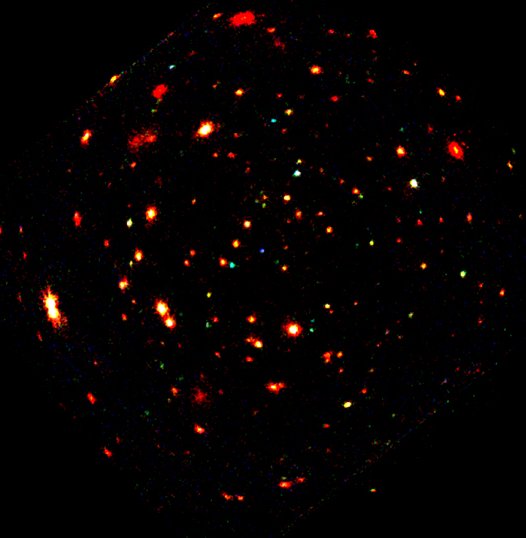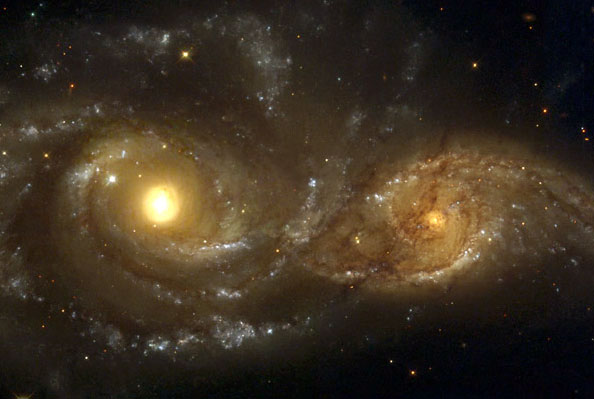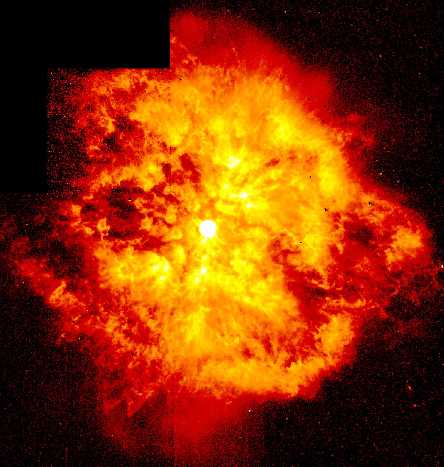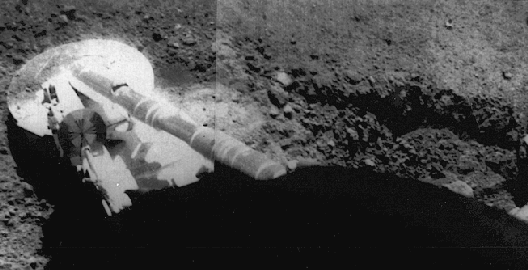| << Previous | Index | Next >> |
2014 To some, it may look like a cat's eye. The alluring Cat's Eye nebula, however, lies three thousand light-years from Earth across interstellar space. A classic planetary nebula, the Cat's Eye (NGC 6543) represents a final, brief yet glorious phase in the life of a sun-like star. This nebula's dying central star may have produced the simple, outer pattern of dusty concentric shells by shrugging off outer layers in a series of regular convulsions. But the formation of the beautiful, more complex inner structures is not well understood. Seen so clearly in this digitally sharpened Hubble Space Telescope image, the truly cosmic eye is over half a light-year across. Of course, gazing into this Cat's Eye, astronomers may well be seeing the fate of our sun, destined to enter its own planetary nebula phase of evolution ... in about 5 billion years.
2013 While anxiously waiting for Comet ISON to brighten further as it falls toward the Sun, northern skygazers can also find three other bright comets in the east before dawn. In fact, Comet Lovejoy C/2013 R1 is currently the morning sky's brightest. Only discovered in September and not a sungrazing comet, this Comet Lovejoy is nearing the edge of naked-eye visibility and might be spotted from very dark sky sites. Sporting a greenish coma and tail in this telescopic view taken on November 7, Comet Lovejoy is about 0.5 AU from our fair planet and 1.2 AU from the Sun. The comet is having a photogenic Messier moment, sweeping past well known star cluster M44, the Beehive in Cancer. Yellowish bright star Delta Cancri is near the bottom of the frame.
2012 Cosmic clouds seem to form fantastic shapes in the central regions of emission nebula IC 1805. Of course, the clouds are sculpted by stellar winds and radiation from massive hot stars in the nebula's newborn star cluster, Melotte 15. About 1.5 million years young, the cluster stars are toward the right in this colorful skyscape, along with dark dust clouds in silhouette against glowing atomic gas. A composite of narrow and broad band telescopic images, the view spans about 30 light-years and includes emission from hydrogen in green, sulfur in red, and oxygen in blue hues. Wider field images reveal that IC 1805's simpler, overall outline suggests its popular name - The Heart Nebula. IC 1805 is located about 7,500 light years away toward the constellation Cassiopeia.
2011 Asteroid 2005 YU55 passed by the Earth yesterday, posing no danger. The space rock, estimated to be about 400 meters across, coasted by just inside the orbit of Earth's Moon. Although the passing of smaller rocks near the Earth is not very unusual -- in fact small rocks from space strike Earth daily -- a rock this large hasn't passed this close since 1976. Were YU55 to have struck land, it might have caused a magnitude seven earthquake and left a city-sized crater. A perhaps larger danger would have occurred were YU55 to have struck the ocean and raised a large tsunami. The above radar image was taken two days ago by the Deep Space Network radio telescope in Goldstone, California, USA. YU55 was discovered only in 2005, indicating that other potentially hazardous asteroids might lurk in our Solar System currently undetected. Objects like YU55 are hard to detect because they are so faint and move so fast. However, humanity's ability to scan the sky to detect, catalog, and analyze such objects has increased notably in recent years.
2010 Why is there a line segment on the sky? In one of the more precise alignments known in the universe, what is pictured above is actually a disk galaxy being seen almost perfectly edge on. The image from the Hubble Space Telescope is a spectacular visual reminder of just how thin disk galaxies can be. NGC 4452, a galaxy in the nearby Virgo Cluster of Galaxies, is so thin that it is actually difficult to determine what type of disk galaxy it is. Its lack of a visible dust lane indicates that it is a low-dust lenticular galaxy, although it is still possible that a view from on top would reveal spiral structure. The unusual stellar line segment spans about 35,000 light years from end to end. Near NGC 4452's center is a slight bulge of stars, while hundreds of background galaxies are visible far in the distance. Galaxies that appear this thin are rare mostly because our Earth must reside (nearly) in the extrapolated planes of their thin galactic disks. Galaxies that actually are this thin are relatively common -- for example our own Milky Way Galaxy is thought to be about this thin.
2009 Where do stars form when galaxies collide? To help find out, astronomers imaged the nearby galaxy merger NGC 2623 in high resolution with the Hubble Space Telescope in 2007. Analysis of this Hubble image and images of NGC 2623 in infrared light by the Spitzer Space Telescope, in X-ray light by XMM-Newton, and in ultraviolet light by GALEX, indicate that two originally spiral galaxies appear now to be greatly convolved and that their cores have unified into one active galactic nucleus (AGN). Star formation continues around this core near the above image center, along the stretched out tidal tails visible on either side, and perhaps surprisingly, in an off-nuclear region on the upper left where clusters of bright blue stars appear. Galaxy collisions can take hundreds of millions of years and take several gravitationally destructive passes. NGC 2623, also known as Arp 243, spans about 50,000 light years and lies about 250 million light years away toward the constellation of the Crab (Cancer). Reconstructing the original galaxies and how galaxy mergers happen is often challenging, sometimes impossible, but generally important to understanding how our universe evolved.
2008 What's happening at the center of active galaxy 3C 75? The two bright sources at the center of this composite x-ray (blue)/ radio (pink) image are co-orbiting supermassive black holes powering the giant radio source 3C 75. Surrounded by multimillion degree x-ray emitting gas, and blasting out jets of relativistic particles the supermassive black holes are separated by 25,000 light-years. At the cores of two merging galaxies in the Abell 400 galaxy cluster they are some 300 million light-years away. Astronomers conclude that these two supermassive black holes are bound together by gravity in a binary system in part because the jets' consistent swept back appearance is most likely due to their common motion as they speed through the hot cluster gas at 1200 kilometers per second. Such spectacular cosmic mergers are thought to be common in crowded galaxy cluster environments in the distant universe. In their final stages the mergers are expected to be intense sources of gravitational waves.
2007 This gorgeous skyscape spans some 10 degrees across the heroic constellation Perseus, about the size of a generous binocular field of view. The deep exposure includes bright stars, emission nebulae, star clusters, and, of course, the famous Comet Holmes. To identify the celestial landmarks, just place your cursor over the image. The brightest star in view, Alpha Persei, is itself surrounded by a loose cluster of stars - the Alpha Per Moving Cluster - at a distance of about 600 light-years. But, at a distance of a mere 14 light-minutes bright Comet Holmes still dominates the scene with its fluorescing greenish coma and foreshortened blue tail.
2006 As a bright November Moon lit up the night sky last week, Gil Esquerdo spotted this lovely Moon halo overhead at the Whipple Observatory on Mt. Hopkins, Arizona. In the foreground, the structure and individual component mirrors of Whipple's 10 meter gamma-ray telescope actually block direct light from the lunar disk, emphasizing the halo in this dramatic view. The halo was caused by ice crystals in the thin high clouds above the observatory - crystals that are hexagonal in shape and produce the characteristic ring of light with a 22 degree radius. In fact, the ice crystal shapes are much like the flat, hexagonal mirrors of the specialized telescope in the picture. Used together the mirrors can collect brief flashes of optical light caused by high-energy gamma-rays impacting Earth's atmosphere.
2005 What happened to the Sun? Nothing very unusual: the strange-looking solar appendage on the lower left is actually just a spectacular looking version of a common solar prominence. A solar prominence is a cloud of solar gas held above the Sun's surface by the Sun's magnetic field. Pictured above in 2002 October, NASA's Sun-orbiting SOHO spacecraft imaged an impressively large prominence hovering over the surface, informally dubbed a flame. Over 40 Earths could line up along the vast length of the fireless flame of hovering hot gas. A quiescent prominence typically lasts about a month, and may erupt in a Coronal Mass Ejection (CME) expelling hot gas into the Solar System. Although somehow related to the Sun's changing magnetic field, the energy mechanism that creates and sustains a Solar prominence is still a topic of research.
2004 On some nights the sky is the most interesting show in town. This fisheye picture captures a particularly active and colorful auroral corona that occurred two days ago over l'Observatoire de la Decouverte in Val Belair near Quebec, Canada. The above spectacular aurora has an unusually high degree of detail, range of colors, and breadth across the sky. The vivid green, red, and blue auroral colors are likely caused by high atmospheric oxygen and hydrogen reacting to incoming electrons. The trigger events were magnetically induced explosions on the Sun from sunspot region 696 over the past few days. Continued activity from this active solar region could mean more auroras visible to northern observers over the next few days. Early in the morning but far in the background, planets, stars and the Moon will be simultaneously putting on their own show.
2003 Buzz Aldrin, Apollo 11 Lunar Module pilot and the second human to walk on the Moon, described the lunar landscape as "a magnificent desolation". Dramatic pictures from the Apollo missions to the lunar surface testify to this apt turn of phrase. Near the Apollo 17 landing site, Family Mountain (center background) and the edge of South Massif (left) frame the lunarscape in this photo of astronaut Harrison Schmitt working alongside the lunar roving vehicle. Schmitt and fellow astronaut Eugene Cernan were the last to walk on this magnificent desolation.
2002 High atop a Chilean mountain lies one of the premier observatories of the southern sky: the Cerro Tololo Inter-American Observatory (CTIO). Pictured above is the dome surrounding one of the site's best known instruments, the 4-meter Blanco Telescope. Far behind the dome are thousands of individual stars and diffuse light from three galaxies: the Small Magellanic Cloud (upper left), the Large Magellanic Cloud (lower left), and our Milky Way Galaxy (right). Visible just to Blanco's right is the famous superposition of four bright stars known as the Southern Cross. A single 20 second exposure, this digital image was recorded with a sensitive detector intended for astronomical imaging. The observatory structures are lit solely by starlight.
2001 The most prolific comet discovering instrument in history rides aboard the sun-staring SOHO spacecraft, 1.5 million kilometers sunward of planet Earth. Of course, most of these SOHO comets have been sungrazers - like the one illustrated in the dramatic montage above. Three frames taken hours apart on October 23rd, show bright SOHO comet number 367 plunging toward the fiery solar surface, its tail streaming away from the Sun located just beyond the left hand border. Each panel spans about one million kilometers at the distance of the Sun. From bottom to top, the comet's tail grows as the intensifying solar radiation heats the frozen comet material and increases the outflow of gas and dust. Because of their orbits, sungrazers are believed to belong to a family of comets produced by the breakup of a single much larger comet. Coincidentally, this sungrazer was discovered shortly after solar active regions blasted out clouds of energetic particles, like those that triggered the recent spectacular auroral storms. And like all SOHO sungrazers so far, comet number 367 was not seen to survive its close solar encounter.
2000 Early on, x-ray satellites revealed a surprising cosmic background glow of x-rays and astronomers have struggled to understand its origin. Now, peering through a hole in the obscuring gas and dust of our own Milky Way Galaxy, the powerful orbiting XMM-Newton telescope has recorded this deep image of the x-ray sky, resolving some of the mysterious background into many faint individual sources. The tantalizing image is color-coded, with red representing relatively low energy x-rays, photons with 500 or so times the energy of visible light. Green and blue colors correspond to increasingly energetic x-rays with up to about 10,000 times visible light energies. Notably, the faint sources tend to be green and blue, showing x-ray characteristics of huge amounts of material falling into massive black holes in very distant galaxies. Do massive black holes reside in the hearts of all large galaxies? The XMM-Newton results add to the growing consensus that they do and that, from across the universe, x-rays produced as matter feeds these black holes account for the cosmic x-ray background.
1999 Billions of years from now, only one of these two galaxies will remain. Until then, spiral galaxies NGC 2207 and IC 2163 will slowly pull each other apart, creating tides of matter, sheets of shocked gas, lanes of dark dust, bursts of star formation, and streams of cast-away stars. Astronomers predict that NGC 2207, the larger galaxy on the left, will eventually incorporate IC 2163, the smaller galaxy on the right. In the most recent encounter that peaked 40 million years ago, the smaller galaxy is swinging around counter-clockwise, and is now slightly behind the larger galaxy. The space between stars is so vast that when galaxies collide, the stars in them usually do not collide.
1998 Some stars explode in slow motion. Rare, massive Wolf-Rayet stars are so tumultuous and hot they are disintegrating right before our telescopes. Glowing gas globs each over 30 times more massive than the Earth are being expelled by a violent stellar wind. Wolf-Rayet star WR124, visible near the image center, is thus creating the surrounding nebula known as M1-67. Why this star has been slowly blowing itself apart over the past 10,000 years remains unclear. WR124 is 15,000 light-years away towards the constellation of Sagitta.
1997 "Safe!" In September 1967 (during regular season play), the Surveyor 5 lander actually slid several feet while making a successful soft landing on the Moon's Mare Tranquillitatis. Equipped with television cameras and soil sampling experiments, the US Surveyor spacecraft were intended to determine if the lunar surface at chosen locations was safe for manned landings. Surveyor 5 touched down on the inside edge of a small crater inclined at about 20 degrees. Its footpad slipped and dug the trench visible in the picture. Covered with lunar soil, the footpad is about 20 inches in diameter.
1996 This panorama of the cratered lunar surface was constructed from images returned by the US Surveyor 6 lander. Surveyor 6 was not the first spacecraft to accomplish a soft landing on the Moon ... but it was the first to land and then lift off again! After touching down near the center of the Moon's nearside in November of 1967, NASA controllers commanded the spacecraft to hop. Briefly firing its rocket engine and lifting itself some 4 meters above the surface, the Surveyor moved about 2.5 meters to one side before setting down again. The hopping success of Surveyor 6 essentially marked the completion of the Surveyor series main mission - to determine if the lunar terrain was safe for the planned Apollo landings.
1995 The famous Sombrero galaxy (M104) is a bright nearby spiral galaxy. The prominent dust lane and halo of stars and globular clusters give this galaxy its name. Something very energetic is going on in the Sombrero's center, as much X-ray light has been detected from it. This X-ray emission coupled with unusually high central stellar velocities cause many astronomers to speculate that a black hole lies at the Sombrero's center - a black hole a billion times the mass of our Sun. This image was taken in blue light by the 0.9 meter telescope at Kitt Peak National Observatory.
| << Previous | Index | Next >> |
